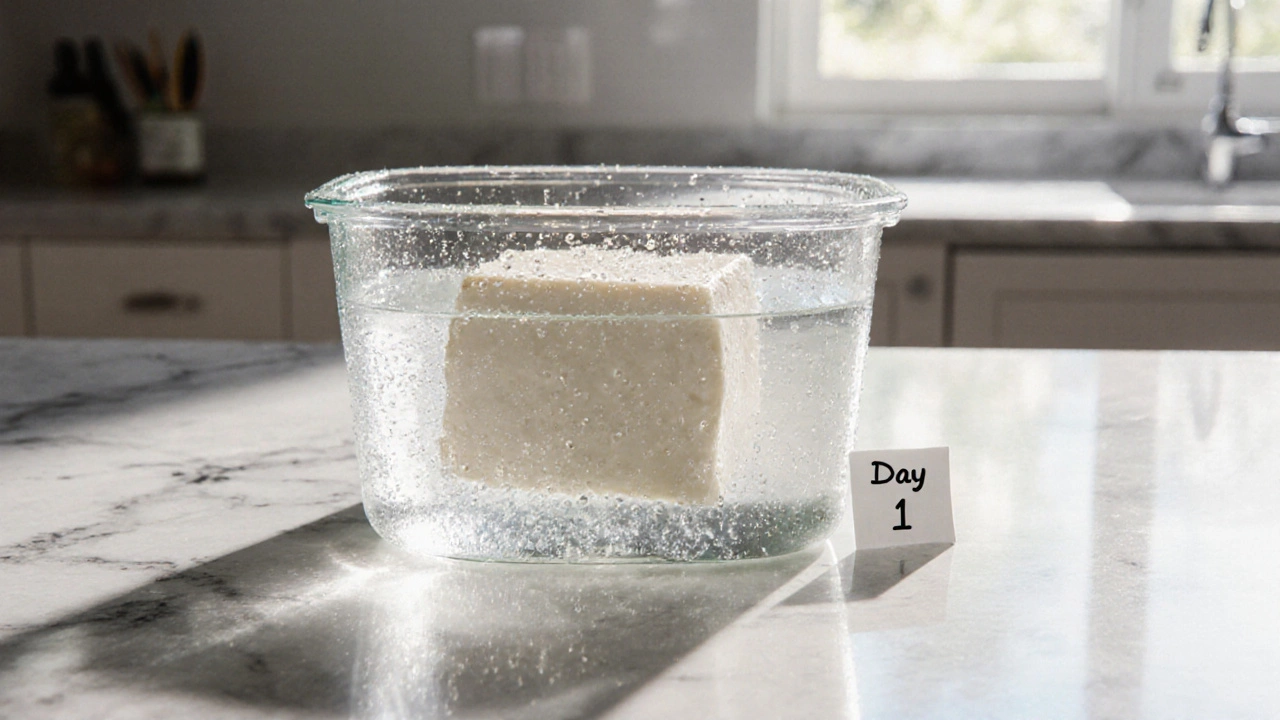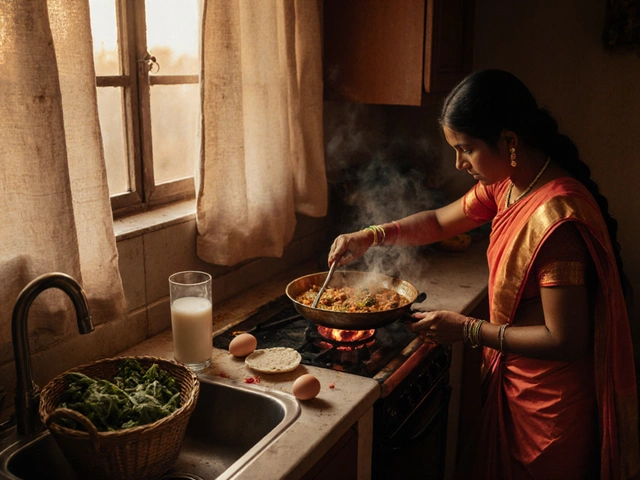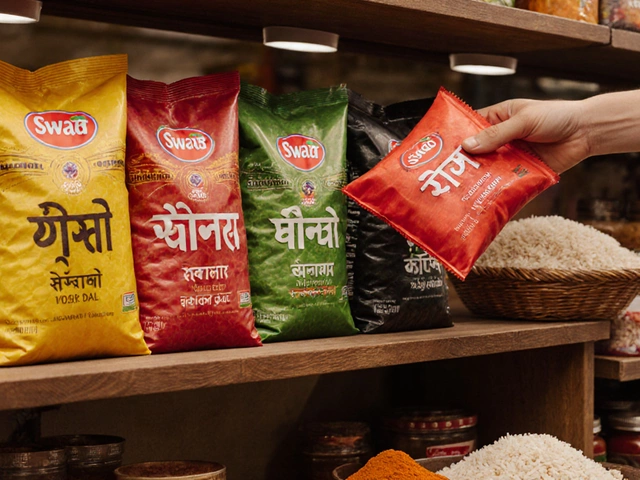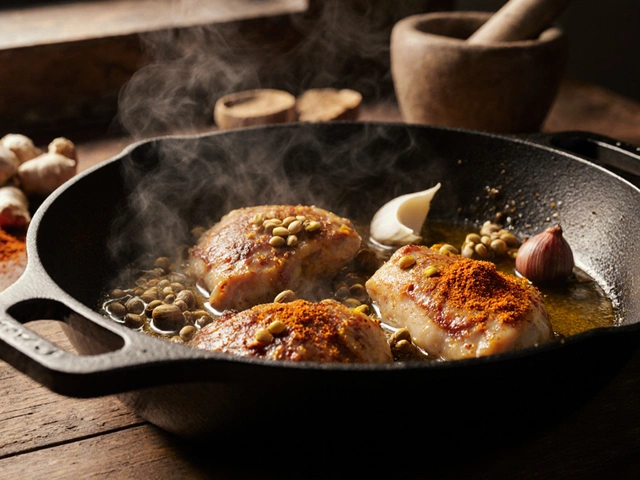Paneer Safety Checker
How to Use This Tool
Answer these questions based on your paneer's condition. This tool analyzes storage time, method, and spoilage signs to give you a safety verdict.
Check visible spoilage signs
You made fresh paneer last week. It looked fine. Smelled okay. You even tasted a tiny piece yesterday-no weird aftertaste. So now you’re wondering: can I eat 7-day-old paneer? The answer isn’t simple. It depends on how you stored it, what it looks like, and whether you’re willing to risk it.
How Long Does Homemade Paneer Actually Last?
Homemade paneer doesn’t last as long as store-bought. That’s because it has no preservatives, no vacuum sealing, and no industrial pasteurization. Freshly made paneer, kept in the fridge at or below 4°C (39°F), lasts about 4 to 5 days at most. After that, the risk of spoilage climbs fast.
By day 7, even if it doesn’t smell bad or look moldy, it’s no longer safe. Bacteria like Listeria and Salmonella can grow without changing the smell or color. These bugs don’t always make food look or taste off-but they can still make you sick.
A 2023 study from the Indian Journal of Food Safety found that homemade paneer stored in the fridge for more than 5 days showed a 68% increase in microbial load compared to fresh batches. That’s not a small number. It’s a red flag.
What Does Spoiled Paneer Look Like?
Not all spoiled paneer screams "I’m dangerous." Sometimes, it just looks a little different. Here’s what to check:
- Color: Fresh paneer is creamy white. Yellowish, grayish, or greenish tinges mean trouble.
- Texture: It should be firm and slightly springy. If it’s slimy, sticky, or crumbly in patches, toss it.
- Smell: Fresh paneer has a mild, milky scent. Sour, yeasty, or ammonia-like odors? Don’t risk it.
- Mold: Even a tiny spot of green or white fuzz means the whole block is contaminated. Mold spores spread through soft foods like paneer faster than you think.
Some people wipe off mold and keep eating. That’s dangerous. Mold roots go deep into soft cheeses and paneer. Cutting it off won’t save you.
Why 7 Days Is Too Long, Even in the Fridge
People think refrigeration stops spoilage. It doesn’t. It just slows it down. Paneer is high in moisture and protein-perfect food for bacteria. Even in the coldest part of your fridge, microbes are still multiplying.
Here’s what happens day by day:
- Day 1-2: Perfect. Firm, fresh, great for curries or grilling.
- Day 3-4: Still safe. Best for cooking-texture holds up well.
- Day 5: Borderline. Only eat if cooked thoroughly and no signs of spoilage.
- Day 6-7: High risk. Bacteria levels rise sharply. No amount of cooking will destroy all toxins.
Some toxins produced by bacteria, like those from Staphylococcus aureus, survive even high heat. Boiling or frying spoiled paneer won’t make it safe. It just makes a hot, dangerous meal.
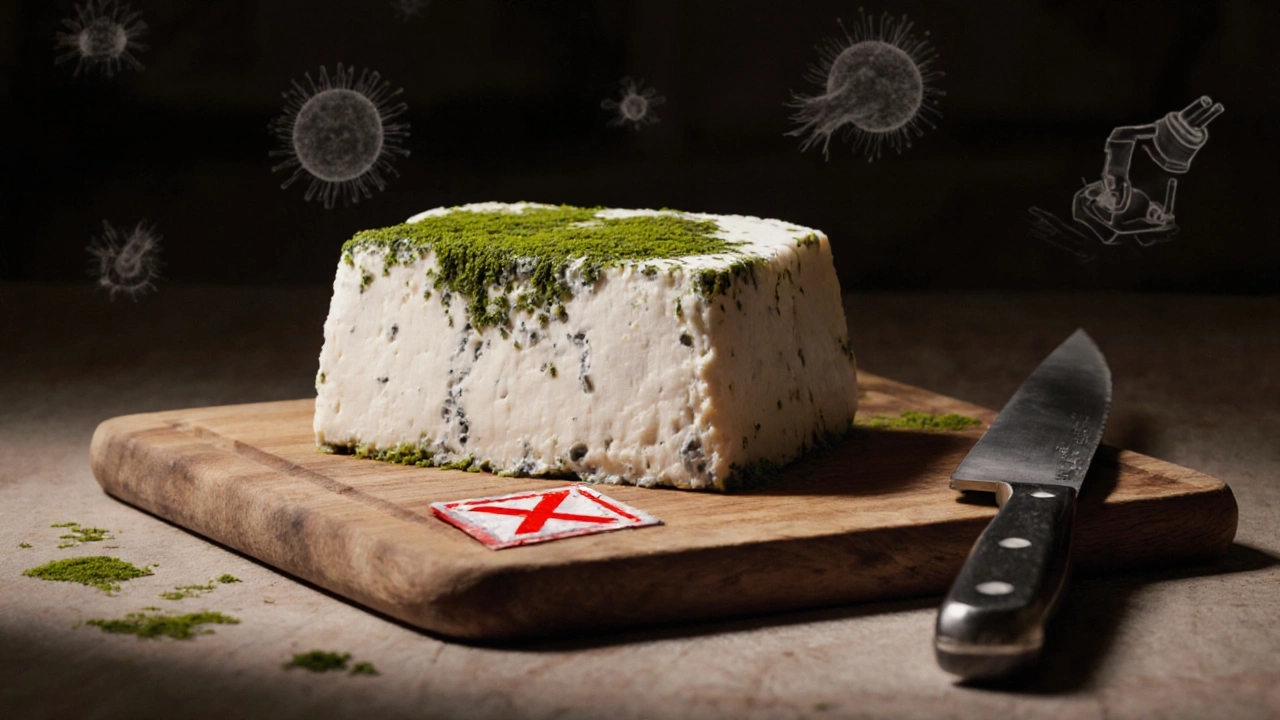
What If You Freeze It?
Freezing paneer is your best bet for longer storage. Wrap it tightly in cling film, then place it in an airtight container. Frozen paneer lasts up to 3 months without losing texture.
Thaw it slowly in the fridge overnight. Don’t microwave it-this makes it rubbery. Once thawed, use it within 2 days. Never refreeze paneer after thawing.
Freezing doesn’t kill bacteria-it just pauses them. So if your paneer was already going bad before you froze it, freezing won’t fix that.
What to Do Instead of Eating Old Paneer
If your paneer is past its prime, don’t eat it. But don’t throw it away either. Here’s what to do:
- Compost it: Paneer is organic. It breaks down fast in compost bins. Just avoid adding it to worm bins-it’s too rich and oily.
- Use the whey: If you still have leftover whey from making paneer, use it in soups, bread, or smoothies. It’s packed with protein and adds a mild tang.
- Make a new batch: Making paneer takes 20 minutes. Use the same milk you had before. Fresh is always better than risky.
There’s no shame in tossing old paneer. But there’s real risk in eating it.
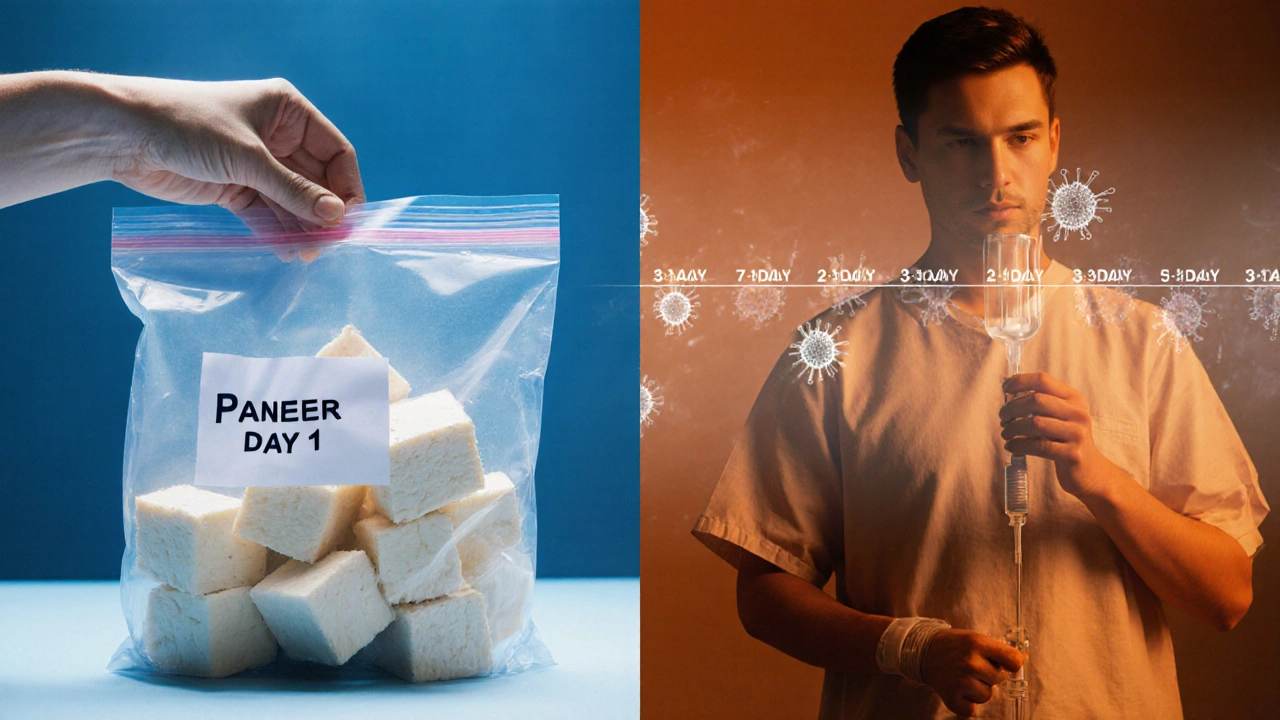
How to Store Paneer Right (So You Don’t Have This Problem)
Want to avoid this whole dilemma? Here’s how to store paneer so it lasts longer:
- Keep it submerged: Store paneer in cold water. Change the water every day. This keeps it moist and slows bacterial growth.
- Use an airtight container: Glass or food-grade plastic. Don’t leave it in the original packaging.
- Keep it cold: Place it in the coldest part of your fridge-not the door.
- Don’t touch it with dirty hands: Always use clean utensils to handle it.
- Label it: Write the date you made it on the container. No guessing.
These steps can stretch your paneer’s life to 5-6 days safely. But never push it to day 7.
Real-Life Consequences: What Happens If You Eat Old Paneer?
One reader in Brighton emailed me last month saying she ate 7-day-old paneer in a curry. She didn’t feel sick until 18 hours later. By then, she was vomiting, had a fever, and couldn’t keep water down. She ended up in urgent care with dehydration.
Her case wasn’t rare. The UK’s Food Standards Agency reports over 200 cases of food poisoning linked to homemade dairy products each year. Most involve paneer, cottage cheese, or yogurt left too long.
Symptoms usually show up within 6 to 48 hours: nausea, diarrhea, stomach cramps, fever. For healthy adults, it’s unpleasant but manageable. For kids, elderly people, or pregnant women, it can be life-threatening.
There’s no reason to gamble with your health over a few pieces of cheese.
Final Verdict: Can You Eat 7-Day-Old Paneer?
No. You shouldn’t.
Even if it looks and smells fine, it’s not safe. The risks aren’t worth it. Homemade paneer is meant to be fresh, simple, and delicious-not a gamble.
If you made it more than 5 days ago, toss it. Make a new batch. It takes 20 minutes. The milk costs less than a coffee. Your stomach will thank you.
Food safety isn’t about being perfect. It’s about being smart. And eating 7-day-old paneer? That’s not smart.
Can I eat paneer after 7 days if I cook it well?
No. Cooking kills live bacteria, but not all the toxins they leave behind. Some toxins, like those from Staphylococcus, survive high heat. Even perfectly cooked 7-day-old paneer can still make you sick.
How do I know if paneer has gone bad if it doesn’t smell?
Check the texture and color. Spoiled paneer turns slimy, sticky, or crumbly. It may look yellow, gray, or have greenish spots. Mold-even a tiny dot-means it’s unsafe. Smell isn’t always reliable, so look for physical changes.
Can I freeze paneer to make it last longer?
Yes. Wrap paneer tightly in cling film, then place it in an airtight container. It stays good for up to 3 months in the freezer. Thaw it slowly in the fridge, and use it within 2 days after thawing. Never refreeze it.
Why does homemade paneer spoil faster than store-bought?
Store-bought paneer is often pasteurized, vacuum-sealed, and may contain preservatives. Homemade paneer is made with raw milk, exposed to air, and has no additives. That makes it fresher-but also more perishable.
Is it safe to eat paneer past its expiration date if it looks fine?
No. "Expiration date" on homemade paneer isn’t a legal requirement-it’s a guideline based on safety. By day 6 or 7, microbial levels rise dangerously, even if the paneer looks and smells normal. When in doubt, throw it out.
